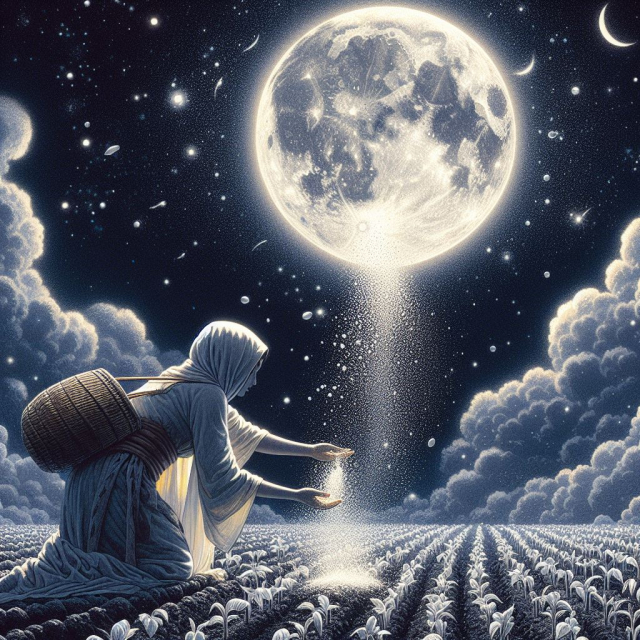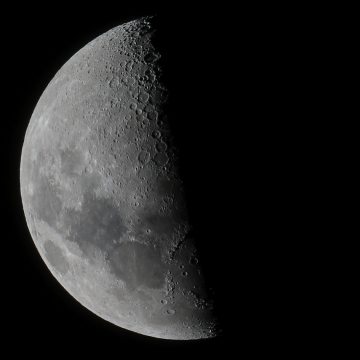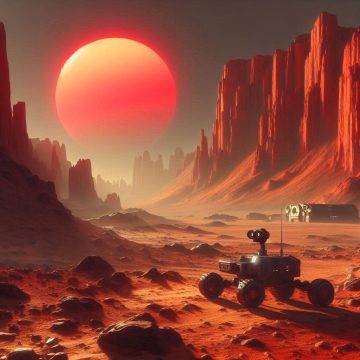Agriculture has been an essential part of human life since time immemorial. From growing staple foods to producing cash crops, planting is a practice that has evolved over time. However, a constant throughout the centuries has been the observation of lunar cycles as a guide for sowing and growing. In this article, we will explore in depth the best days to plant according to the moon in October 2024, examining the lunar phases and how they can influence crop success.
The Influence of the Moon on Agriculture.
The connection between the moon and agriculture is a tradition rooted in human history. Since ancient times, farmers have watched the night sky for clues about when to plant, harvest, and perform other agricultural activities. This practice, based on empirical observation and wisdom transmitted from generation to generation, has endured to this day. The influence of the moon on agriculture is manifested in several facets, from the germination of seeds to the growth and development of plants, and has been the subject of study and debate in the scientific and cultural spheres.
One of the fundamental beliefs in lunar agriculture is that different lunar phases can influence crop behavior and crop yields. According to this view, lunar energy affects soil moisture, sap flow in plants, and other key biological processes. For example, during the New Moon, when the moon is conjunct the sun and not visible from the earth, lunar energy is believed to promote seed germination and root development. On the other hand, during the Full Moon, when the moon is fully illuminated, the lunar energy is believed to promote vigorous and fruitful growth in plants.
This connection between the moon and agriculture is also reflected in lunar calendars, which provide guidelines for when to plant, transplant, fertilize and harvest according to the lunar phases. While some may consider these practices superstitions or folk traditions, many farmers have found tangible benefits from following the lunar calendar in their farming activities. Although modern science has not yet provided a definitive explanation for the relationship between the moon and agriculture, some studies suggest that there may be correlations between certain lunar phases and crop performance.
For example, a study published in the journal "Agricultural and Forest Meteorology" analyzed the effects of the lunar phase on the germination of corn seeds and found that seeds sown during the first quarter phase had slightly higher germination rates than those sown. planted during other lunar phases. However, it is important to note that research in this field is still ongoing, and more studies are needed to fully understand the influence of the moon on agriculture from a scientific perspective.
Beyond practical aspects, the relationship between the moon and agriculture also has deep cultural and spiritual roots in many societies. In many indigenous and ancestral traditions, the moon is revered as a deity or symbol of fertility and renewal. Observance of the lunar cycles is not only a way to ensure crop success, but also an expression of respect and gratitude toward the earth and its natural cycles.
October 2024: A Detailed View of the Moon Phases.
New Moon: Preparation and Renewal.
The New Moon, which marks the beginning of a new lunar cycle, is an auspicious time for preparing the soil and sowing new seeds. In October 2024, the New Moon occurs on October 1. This is an ideal time to plow the soil, remove weeds and amend the soil with compost or organic manure. Preparing the soil during the New Moon can give seeds a strong, healthy start.
Crescent Quarter: Sowing with Strength and Vitality.
As the moon grows in size, the First Quarter, which occurs around October 9, 2024, is an optimal time to plant fast-growing crops and plants that produce fruits and vegetables above the ground. During this phase, the seeds have a greater chance of germinating and growing vigorously. Crops such as lettuce, spinach, radishes and aromatic herbs can especially benefit from being planted during the First Quarter.
Full Moon: Nurturing Growth and Vitality.
The Full Moon, which occurs on October 16, 2024, illuminates the night sky with its full glow. During this phase, lunar energy can be used to nourish plant growth through proper fertilization and watering. It is an ideal time to water plants abundantly and apply organic fertilizers to promote healthy, vigorous growth. Plants tend to absorb more nutrients during the Full Moon, so it's important to provide them with the elements they need to thrive.
Last Quarter: Harvest and Preparation for the Future.
As the moon wanes into its next phase, the Last Quarter, which occurs around October 24, 2024, is an auspicious time for harvesting and preparing the soil for the next planting. It is an ideal time to harvest mature crops and prepare the ground for new plantings. Additionally, it is a good opportunity to perform maintenance tasks, such as pruning and removing old or diseased plants.
Although the exact influence of the moon on crop success may be debated, many farmers find benefits in following the lunar calendar as a guide for planting and growing. By observing the lunar phases and working in harmony with natural cycles, farmers can make the most of the lunar energy and maximize the yield of their crops. Ultimately, planting with the moon in October 2024 is a way to honor ancient wisdom and connect with nature in a meaningful and productive way.






